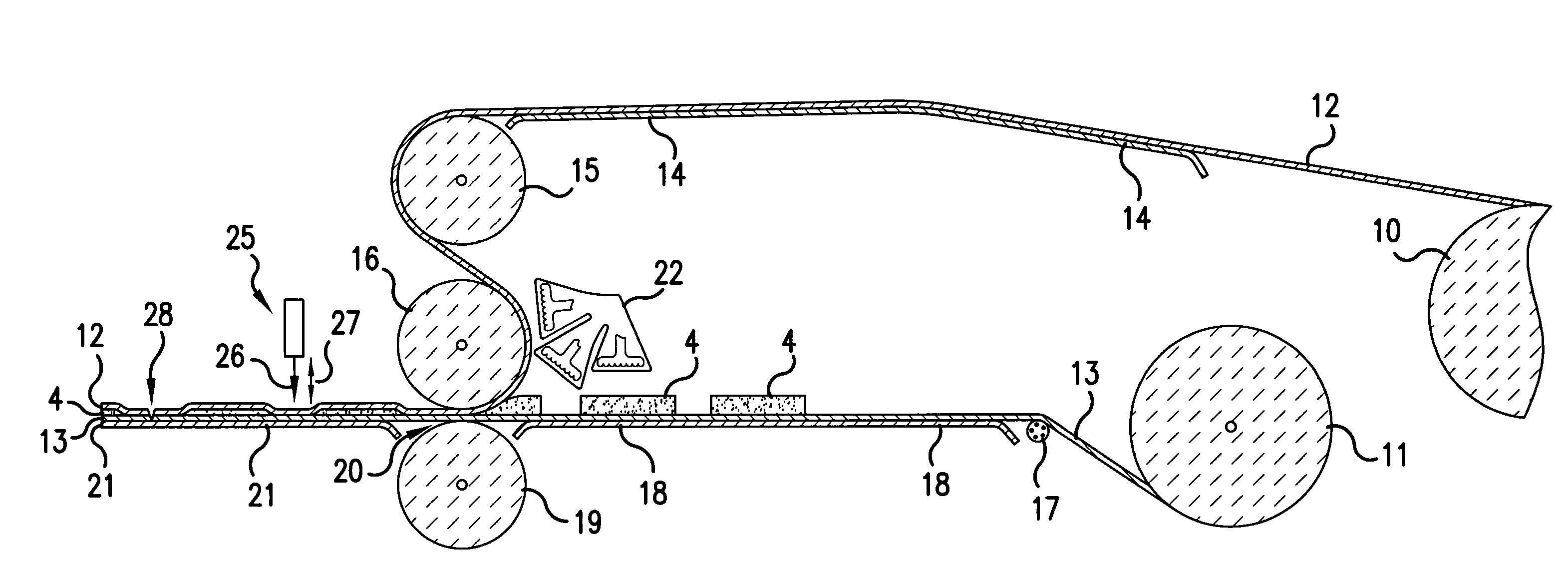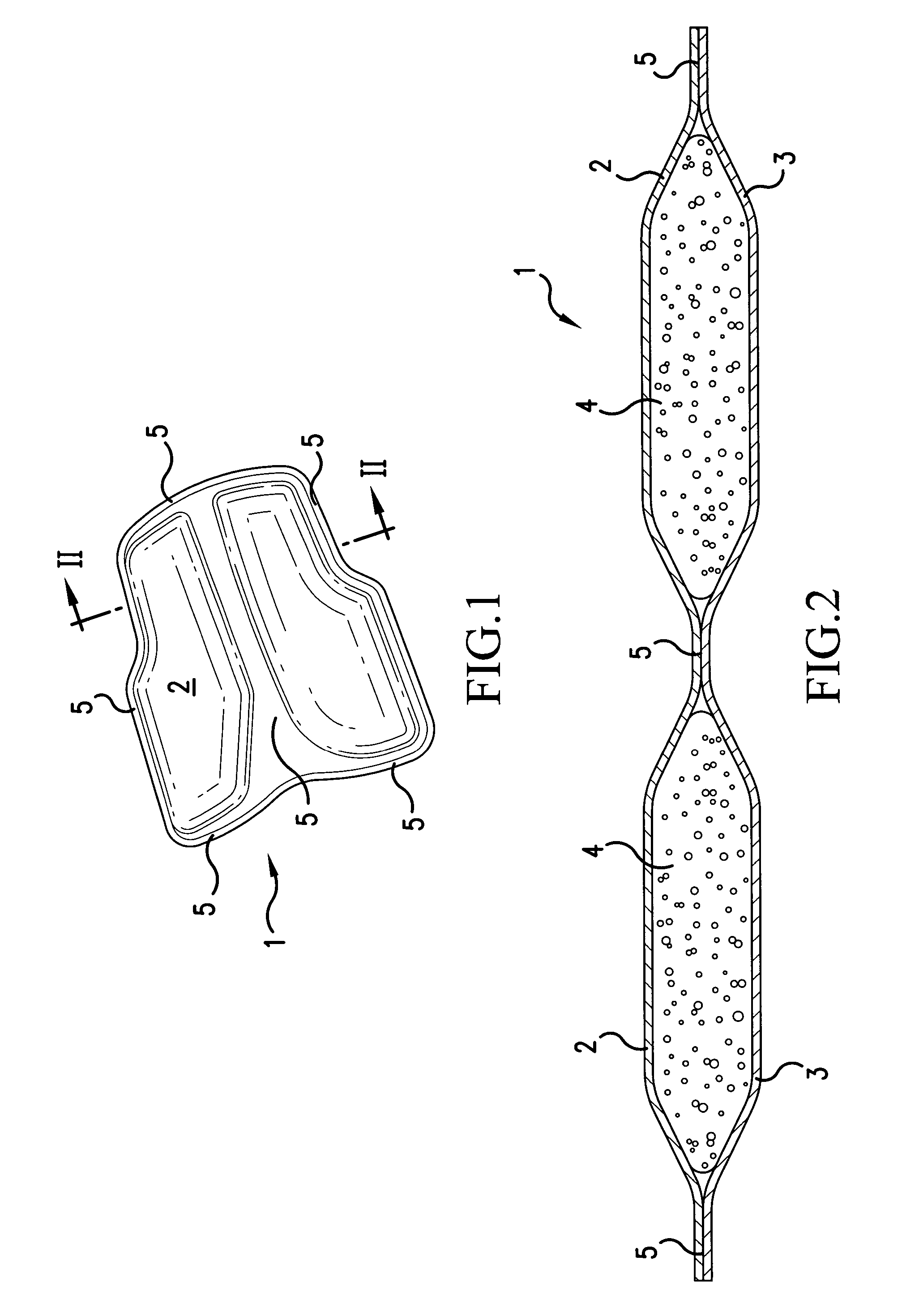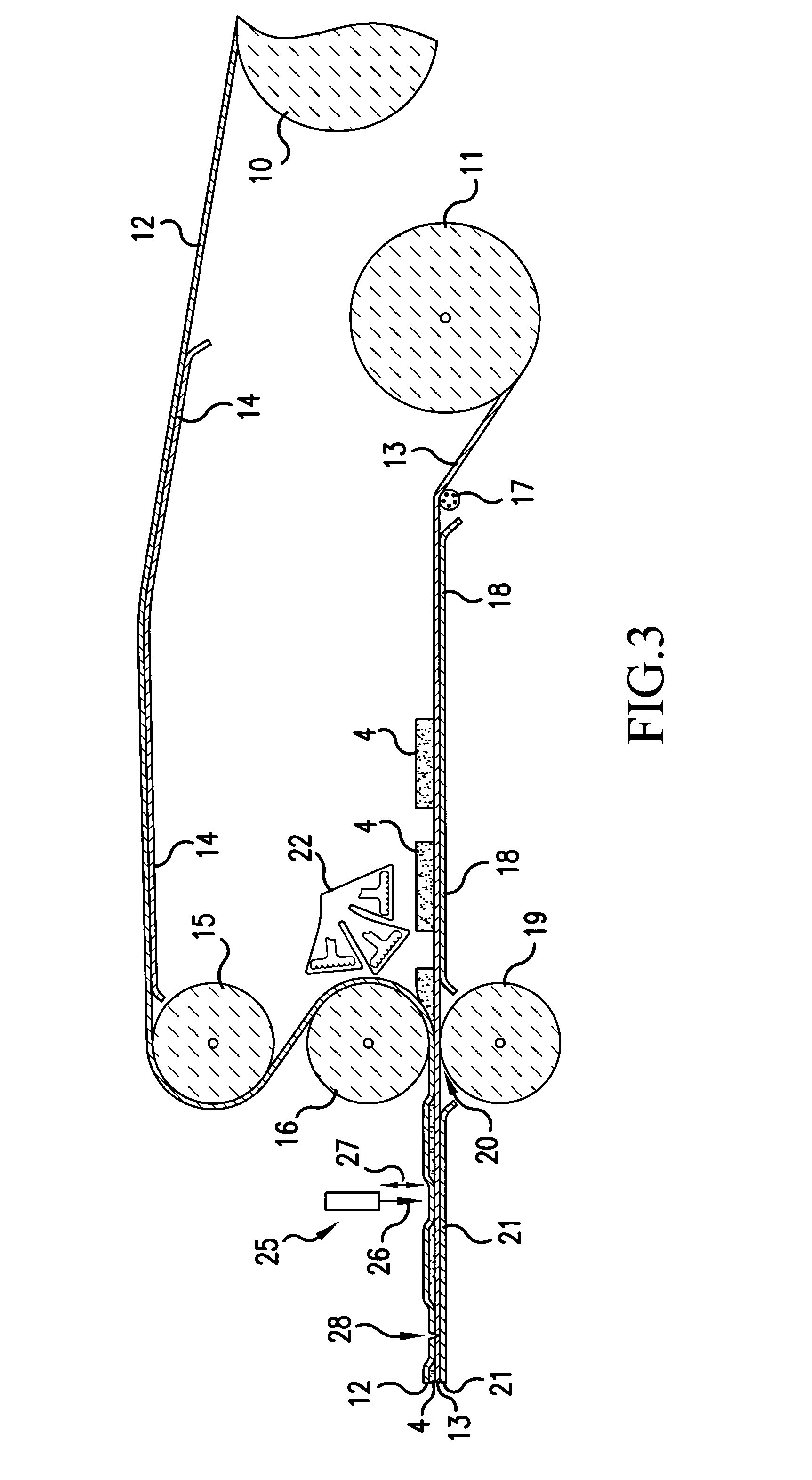Cushioning pads and the formation of cushioning pads
- Summary
- Abstract
- Description
- Claims
- Application Information
AI Technical Summary
Benefits of technology
Problems solved by technology
Method used
Image
Examples
Embodiment Construction
[0030]FIGS. 1 and 2 illustrate a pad 1 constructed by a method in accordance with the present invention. The pad 1 includes a first layer 2 of a first material and a second layer 3 of a second material. The first layer 2 is attached to the second layer 3 at seamed sections 5 to encapsulate one or more components 4.
[0031]The first and second materials are preferably a flexible resilient material which has a low permeability to air, such as a closed-cell foam, like polyethylene foam. The third material is preferably a flexible resilient material which can absorb and release air, such as an open-celled, foam like polyurethane foam. Such open-cell foam typically contains approximately 80% air by volume when in an uncompressed state.
[0032]FIG. 3 is a cross sectional view illustrating an apparatus for, and a method of, forming the pad 1 of FIGS. 1 and 2. The apparatus includes a first feeding spool 10 having a first web 12 of material wound thereon and a second feeding spool 11 with a sec...
PUM
| Property | Measurement | Unit |
|---|---|---|
| Pressure | aaaaa | aaaaa |
| Size | aaaaa | aaaaa |
| Adhesivity | aaaaa | aaaaa |
Abstract
Description
Claims
Application Information
 Login to View More
Login to View More - R&D
- Intellectual Property
- Life Sciences
- Materials
- Tech Scout
- Unparalleled Data Quality
- Higher Quality Content
- 60% Fewer Hallucinations
Browse by: Latest US Patents, China's latest patents, Technical Efficacy Thesaurus, Application Domain, Technology Topic, Popular Technical Reports.
© 2025 PatSnap. All rights reserved.Legal|Privacy policy|Modern Slavery Act Transparency Statement|Sitemap|About US| Contact US: help@patsnap.com



